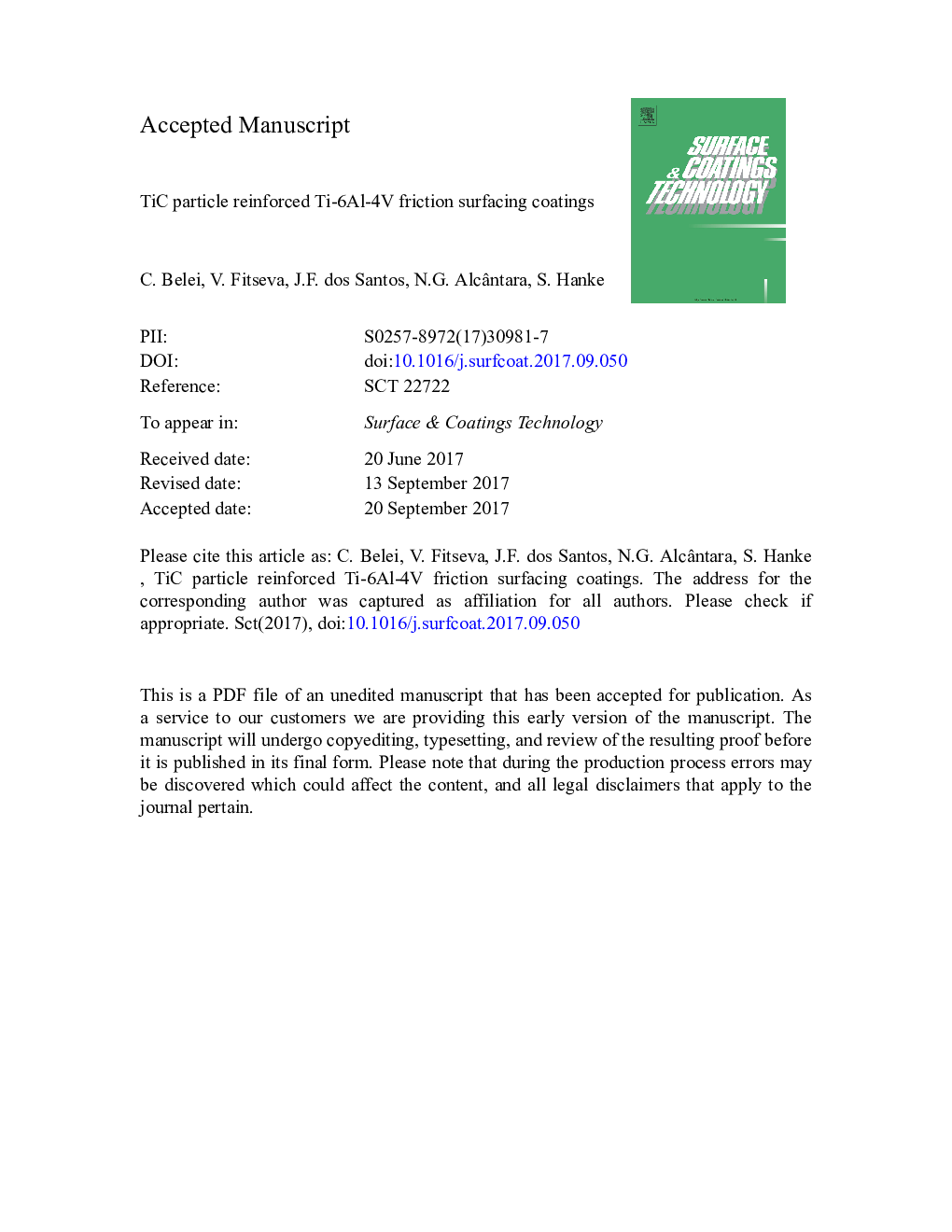| Article ID | Journal | Published Year | Pages | File Type |
|---|---|---|---|---|
| 5464424 | Surface and Coatings Technology | 2017 | 35 Pages |
Abstract
Friction surfacing is a thermo-mechanical process employed to deposit coatings in solid state resorting to friction between a rotating consumable rod and a substrate. The current work focuses on deposition of Ti-6Al-4V composite coatings reinforced with TiC particles on Ti-6Al-4V substrate. Particles were added using holes drilled into the rod tip. Different configurations of hole placements within the rod were correlated with process behavior, coating quality, deposition efficiency and particle distribution within the deposits. Configurations varied in number of holes and their distance to the rod's cross-sectional center. Holes placed near to the rod center increased axial forces during the plastification stage, whereas particles in holes far off the rod center were mainly expelled, not yielding as much effect on the process response. An increase in number of holes amplified the effects of the hole distance. The axial force during plastification stage affected both coating appearance and process efficiency. No full intermixing of coating material and particles during deposition occurred, thereby preventing a uniform distribution of particles throughout the coatings. Particles were mostly deposited along trails, which influenced the behavior of growing grains during recrystallization.
Related Topics
Physical Sciences and Engineering
Materials Science
Nanotechnology
Authors
C. Belei, V. Fitseva, J.F. dos Santos, N.G. Alcântara, S. Hanke,
